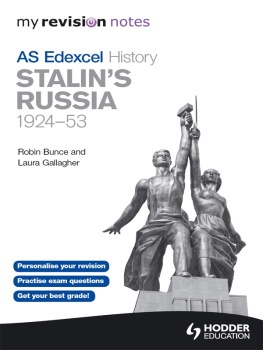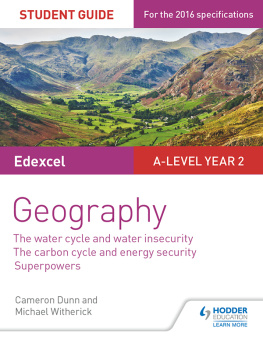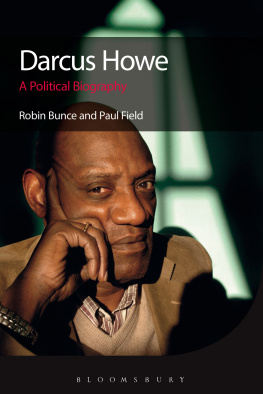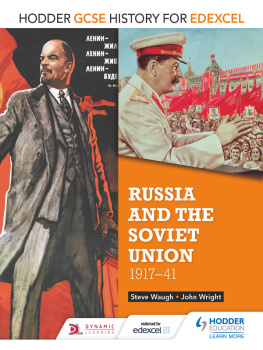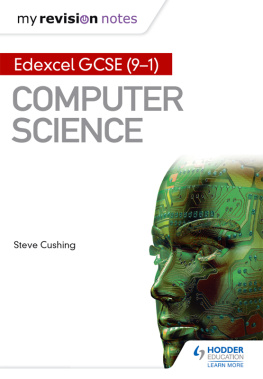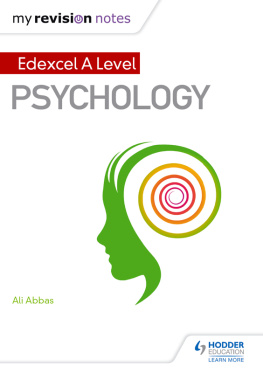
Cover photo Galina Fotolia
Every effort has been made to trace all copyright holders, but if any have been inadvertently overlooked the Publishers will be pleased to make the necessary arrangements at the first opportunity.
Although every effort has been made to ensure that website addresses are correct at time of going to press, Hodder Education cannot be held responsible for the content of any website mentioned in this book. It is sometimes possible to find a relocated web page by typing in the address of the home page for a website in the URL window of your browser.
Hachette UKs policy is to use papers that are natural, renewable and recyclable products and made from wood grown in sustainable forests. The logging and manufacturing processes are expected to conform to the environmental regulations of the country of origin.
Orders: please contact Bookpoint Ltd, 130 Milton Park, Abingdon, Oxon OX14 4SB. Telephone: +44 (0)1235 827720. Fax: +44 (0)1235 400454. Lines are open 9.00a.m.5.00p.m., Monday to Saturday, with a 24-hour message answering service. Visit our website at www.hoddereducation.co.uk.
Robin Bunce and Laura Gallagher 2011
First published in 2011 by
Hodder Education,
an Hachette UK company
338 Euston Road
London NW1 3BH
| Impression number | 10 9 8 7 6 5 4 3 2 1 |
| Year | 2015 2014 2013 2012 2011 |
All rights reserved. Apart from any use permitted under UK copyright law, no part of this publication may be reproduced or transmitted in any form or by any means, electronic or mechanical, including photocopying and recording, or held within any information storage and retrieval system, without permission in writing from the publisher or under licence from the Copyright Licensing Agency Limited. Further details of such licences (for reprographic reproduction) may be obtained from the Copyright Licensing Agency Limited, Saffron House, 610 Kirby Street, London EC1N 8TS.
Typeset in 11pt Stempel Schneidler by Pantek Media, Maidstone, Kent
Artwork by Pantek Media
Printed and bound in India
A catalogue record for this title is available from the British Library
ISBN 978 1 444 15207 4
eISBN 978 1 444 15209 8
Contents
Exam focus
Introduction
About Unit 1
Unit 1 is worth 50 per cent of your AS level. It requires detailed knowledge of a historical period and the ability to explain the causes, consequences and significance of historical events. There are no sources in the Unit 1 exam and therefore all marks available are awarded for use of your own knowledge.
In the exam, you are required to answer two questions from a range of options. The exam lasts for one hour and twenty minutes, unless you have been awarded extra time. The questions are all worth 30 marks and therefore you should divide your time equally between the questions.
The questions you answer must be on different topics. This book deals exclusively with topic D4: Stalins Russia 192453. However, you must also be prepared to answer a question on another topic.
The exam will test your ability to:
select information that focuses on the question
organise this information to provide an answer to the question
show range and depth in the examples you provide
analyse the significance of the information used to reach an overall judgement.
Stalins Russia 192453
The specification states that students should study four general areas as part of this topic.
The struggle for power 192429.
Transforming the Soviet Union collectivisation and industrialisation.
Persecution and control the totalitarian regime.
The making of a superpower the impact of the Second World War.
How to use this book
This book has been designed to help you to develop the knowledge and skills necessary to succeed in Together, these two strands of the book will guide you through the knowledge and skills essential for exam success.
There are three levels of exam-focused activities.
Band 1 activities are designed to develop the foundational skills needed to pass the exam. These have a blue heading and this symbol: |  |
Band 2 activities are designed to build on the skills developed in Band 1 activities and to help you achieve a C grade. These have an orange heading and this symbol: |  |
Band 3 activities are designed to enable you to access the highest grades. These have a purple heading and this symbol: |  |
Some of the activities have answers and have the following symbol to indicate this: 
Others are intended for you to complete in pairs and assess by comparing answers. These do not have answers provided.
Each section ends with an exam-style question, and a model A-grade answer with examiners commentary. This should give you guidance on what is required to achieve the top grades.
You can also keep track of your revision by ticking off each topic heading in the book, or by ticking the checklist on the contents page. Tick each box when you have:
revised and understood a topic
completed the activities.
Mark scheme
For some of the activities in this book, it will be useful to refer to the mark scheme for the unit. Below is the mark scheme for Unit 1.
| Level | Marks | Description |
| 1 | 16 | Lacks focus on the question. Limited factual accuracy. Highly generalised. |
| 2 | 712 | General points with some focus on the question. Some accurate and relevant supporting evidence. |
| 3 | 1318 | General points that focus on the question. Accurate support, but this may be either only partly relevant or lacking detail, or both. Attempted analysis. |
| 4 | 1924 | General points that clearly focus on the question and show understanding of the most important factors involved. Accurate, relevant and detailed supporting evidence. Analysis. |
| 5 | 2530 | As Level 4 |

